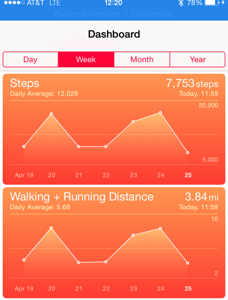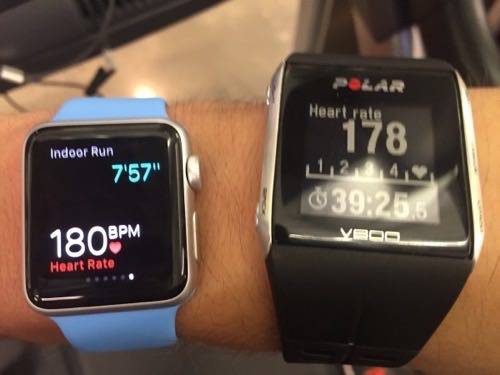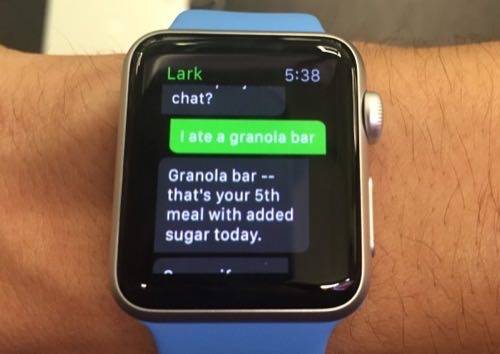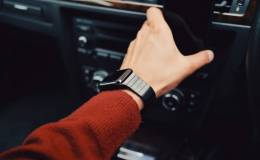This post first appeared on the Ferenstein Wire, a syndicated news service; it has been edited. For inquires, please email author and publisher Gregory Ferenstein.
Over the past three years, fitness wearables have made extraordinary progress, adding features such as precise heart-rate monitoring, form tracking, and energy output. The Apple Watch has none of these features. It is, at present, perhaps the most expensive pedometer on Planet Earth.
In fact, beyond a lackluster heart rate monitor, all the important fitness features of the Apple Watch are already on the iPhone: run tracking, automated coaching, and activity logging. The Apple Watch isn’t even designed to measure what is arguably an athlete’s most important habit, good sleep.
It’s a shame, because I was ridiculously excited about the Apple Watch. I spilled a lot of virtual ink fantasizing about the impending fitness revolution. And after trying out the Apple Watch at my local gym, I can say unequivocally that I’m still hopeful the Apple Watch will be a worthwhile fitness companion some day in the future.
But for now, you gain almost nothing on the fitness front by using an Apple Watch to track your fitness goals instead of an iPhone.
Heart Not In The Fight
Taken together, walking and running are the most popular workouts in America, comprising the main activity for more than a third of the exercising masses. The iPhone is a delightful companion for this staple of American health. The latest version of iOS for iPhone automatically tracks walking and running, assuming you carry your phone with you most of the day.
If you have pockets or an arm-band, Apple Watch fitness apps like Endomondo will use the iPhone to collect the bulk of their statistics, such as distance, pace, and elevation. Below is the record of my run up into San Francisco’s beautiful Bernal Heights, without an Apple Watch.)

Quantified-self enthusiasts also often run with a heart rate monitor. Eliminating yet another gadget was one big promise of the Apple Watch. Unfortunately, its heart-rate monitor’s sluggish performance makes that impossible.
During a test run at the gym, my Polar chest strap knew that I was well into my target heart rate zone while the Apple Watch was still crunching the numbers. (Check it out in the cover photo at the top of this post.) During an exhausting run, staring at your watch is the last thing you want to do, for both safety and sanity reasons.
If I ran long enough, the Apple Watch did eventually catch up to my actual heart rate during hill sprints (in gym testing), approximating my heart rate at near 180 beats per minute. But as soon as I started drifting, the iPhone couldn’t tell me that I was going too easy. In fact, to take the picture below, I had completely stopped running — but Apple’s heart-rate monitor didn’t know that.

Heart rate training is a very sensitive strategy; a discrepancy of greater than 10 beats a minute can mean the difference between a sweat-drenched goal-crushing workout and wasted lollygagging. Especially at high heart rates, every second counts. Too bad the Apple Watch doesn’t.
Devices For Fitness
The Apple Watch still could be a revolutionary device, but mostly for its ability to take in data from more fitness-specific devices. The next evolution of fitness is form tracking: wearables that can tell if your movements are sloppy or are executed with Olympic-class perfection. A few examples:
- The Sensoria Smart Sock, for instance, has helped teach me how to run on the ball of my foot, so I don’t wake up the next day hobbling on a damaged heel. It has an automated audio coach that whispers instructions in your ear as you run.
- The Amiigo wrist band pairs with a shoelace clip to automatically monitor repetitions during weight training.
- Athos smart shorts use electrical signals to sense if users are tensing the right muscles. During a trial run, the shorts told me that my Spin bike form was great, but my olympic squat was dangerously over-reliant on one leg. Symmetry between limbs is a key to power and preventing injury.
Eventually, Apple could combine all this data to give me an overall picture of my health. For instance, Apple might find a pattern between a well-executed weight lifting session and fat loss the next day. Or Apple might notice that poor running form is decreasing the number of days I exercise each month and recommend that I rest my feet for a week.
For now, though, that’s all theory.
Apple iOS Is Good For General Wellness
For general wellness, the iPhone already tracks important measures. If you carry your phone in your pocket, the newest Apple iOS software automatically logs steps, stairs and running. There are even apps that can calculate basic sleep statistics by how your phone jostles on your bed at night.
But, if you think a new gadget is what you (or your parents) need to kick their health-consciousness into gear, the Apple Watch might be a great idea. Anyone who needs reminders to eat better, stand up more or go for a walk at night might find the Apple iOS a fine choice.
For instance, the app that Apple chose as one of the best new health apps, Lark, uses proven psychological coaching techniques to remind users to be more active and eat healthier.
Users can speak into the watch to log meals and Lark will automatically send top-tier coaching advice back to the user in real time. I was impressed that it had incorporated the latest health guidelines on granola bars, which are now well-known trojan horses of sugar.

But for folks who might be training for a triathlon, weight lifters, runners, cyclists or CrossFitters, the Apple Watch doesn’t add much. At least for now. This is just the Apple Watch’s first generation , so it could easily evolve into a more worthwhile fitness companion in the future.
Photos by Greg Ferenstein for the Ferenstein Wire









